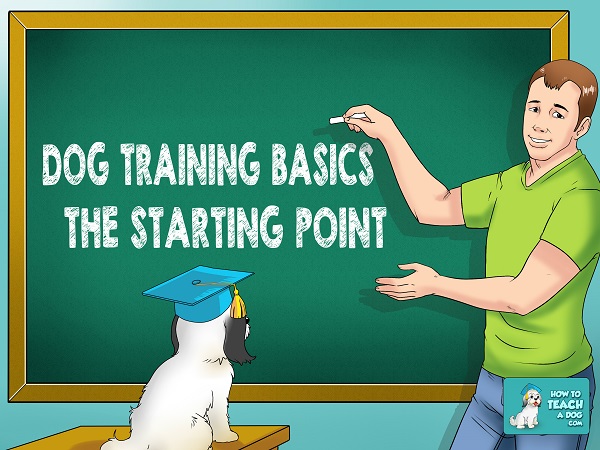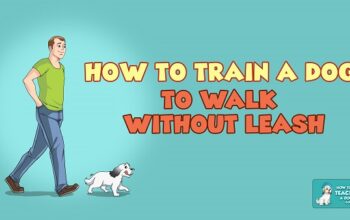
Dog training is such a large topic that it can be difficult to know where to even begin. Often times the idea of training only comes up when someone says, “We need the dog to stop doing that!” Training and working with a dog needs to begin at a much earlier point, and there is a lot more to it than simply telling the dog what not to do. In order to have a well-rounded dog who listens there are actually several components that need to be ideally met. We’ll go through each point to look further into how it affects your dog.
1. Socialization
Socialization is often under-valued as it relates to the average dog. There are many puppies and dogs who come into someone’s house and rarely go out of it. The trouble with this is becomes that you create a dog who doesn’t know how to handle the things (people, animals, places, etc.) he may encounter in life. Some dogs are better at rolling with this than others, but not having exposure to a wide variety of situations can cause a dog who isn’t confident, doesn’t know what to do, and can even cause behavioral issues such as fear, aggression, nervousness, etc.
Socialization is entirely about positive exposures. This means making sure that each experience is fun and comfortable for your dog, not scary. It doesn’t mean throwing your puppy into the dog park run and letting him meet 30 dogs at once. It doesn’t mean taking your shy puppy and forcing him to sit still while people pet him. These would be examples of potentially scary episodes that could actually do more damage than good. Instead, it means looking for opportunities for your puppy to excel. Consider puppy kindergarten classes. Take your dog out to the park or outdoor activities you go to. Invite people over to your home for a puppy party. The point is that your puppy is getting out and seeing the world and all it has to offer.
Think of socialization as a journey and not a destination. While the most critical time period is 2-4 months of age, a puppy needs to continue seeing things and being aware of his world for his lifetime. It is possible to do remedial socialization for a dog who lacked those early experiences, such as an older adopted dog, but it’s not nearly as ideal as a puppy who had it all along.
2. Fulfilling exercise and energy needs
It doesn’t matter how much training and rule setting you do. If you don’t fully exercise your dog each day you will still have problems. Many behavioral problems that people complain the most about have a root in the dog simply not getting enough exercise. Look at issues like barking, digging, escaping the yard or house, hyperactivity, jumping, biting, chewing and destruction, and the list goes on ….these can all be rooted in not enough exercise. They can morph into habitual problems outside of lack of exercise, but this it least where it started.
Many times you take a dog who has a laundry list of issues, and you start them on a really great daily routine of exercise, and you know what happens ….a lot of the problems seem to go away or really decrease. It’s not a miracle that this happens. The old adage of a tired puppy is a good puppy is really true.
First step is to establish a daily exercise plan for you and your dog. Even if you have a fenced in yard you need to do this. Most dogs who sit in fenced in back yards by themselves actually don’t exercise. They find their own entertainment like digging or jumping over the fence to visit the neighbor. Otherwise the dog just lays around waiting for you. It doesn’t mean you can’t use your fenced in yard but consider a rigorous play session with your dog. Try to do at least one good long walk per day with your dog. How long is enough? The goal is for your dog to be happily tired, so adjust the length of the walk, the difficulty of the walk, or even the number of times you walk to your dog.
Additionally, look for things you enjoy to do too. A dog can be incorporated into so many activities that you would be amazed, and then you know that both you and the dog are getting exercise and enjoying it.
3. Fulfilling mental stimulation
A dog’s body needs exercised, and so does his brain. Mental activity is good for your dog’s health, and it wears him out too. Luckily it crosses over with other areas. For example, walking your dog in a new location can be very mentally tiring since your dog is processing new scents on the walk and experiencing exciting jitters at a new spot. Training is also another way to mentally stimulate your dog, plus it’s a good idea for your relationship with him. You’re getting a two for one with training!
There are other ways to get your dog’s brain working. Look at ideas like:
– Teach your dog the names to different toys. This way you can ask him to get a specific toy by name. There is one border collie, Chaser, who knows 1,022 toys by their individual name, and she can prove it too!
– Play hide and seek games with your dog. It might be you hiding, and you might hide an object, like a toy, for your dog to find. These games really work your dog’s brain since he has to use his nose too and process a lot of information. Nose Works is a form of scent detection on the pet dog level that can be a lot of fun.
– Have your dog work for his food. This could be using his food as part of the training plan, or this could also be using a variety of food dispenser games and toys that he can play with to get food.
4. Training
You take your dog, hopefully, to a training class to learn certain commands like Sit or Down, but then what do you do? That is the dilemma. A dog may know how to Sit on command, but he still jumps up on people. How do you take these commands he has learned and create a well-adjusted dog who listens?
What it amounts to is you have to get in the habit of training your dog each day. Dogs learn via patterns, and they are always learning. Whether you know it or not you are training him all the time! He is learning how he gets things he wants, how he gets you to do things he wants, what your response is to a variety of things, etc.
In dog training, we have to get in the habit of not telling our dogs what we don’t want them to do but instead to show them what we want them to do. Reward him when you see him doing what you want! Rewards mean that he is more likely to want to figure out how to do it again. Replace the word NO with words that have value and that are telling. For example, NO! could be exchanged for a trained Leave It command. Or NO! could be exchanged for a Sit command so that someone can pet him without being jumped on. Training allows you to have a way to communicate in a useful way with your dog.
Training should begin the very first day you have your new dog whether he is an 8 week old puppy or a 2 year old dog. It’s the way that you show him what works with you. If you allow him to jump up on you for 2 weeks and then change your mind, do you know how much harder that habit becomes to change?
Additionally, training becomes a way to develop manners in your dog. It’s kind of like teaching a young child to always say please. You take the commands your dog knows how to do and then ask him to do those in exchange for things he wants or needs. He could Sit and Stay while the door is opened. He could Wait while you open the car door instead of jumping out. He could Sit while you get ready to throw his toy instead of lunging for your hand. He could Down before he gets his dinner. The point is that using these commands gives him manners because he knows that how he receives things in life is through good behavior and doing what you have requested. Additionally, this is all very positive and doesn’t involve force at all. He learns that his behavior matters all on his own through your guidance and teaching.
5. Setting boundaries
Setting boundaries simply means creating rules for your home. This is a good thing. It goes alongside manners. A dog needs to know what is expected of him, and by creating a set of boundaries it makes it far easier for him to know. Sometimes a dog becomes confused because the family doesn’t know the boundaries either. Mom says one thing, dad another, and the kids something else too. Everyone in a family should be a on the same page with a dog so that he knows what he can and can’t do. It causes less frustration and confusion for the dog and for the family.
Ideally set out what you expect from your dog. Can he get on furniture? Is he allowed to jump up? Should he stay seated or lying down at specific times? How should he walk on the leash? What are those expectations? Then you use your training to set those boundaries for him. Dogs are excellent at following rules and like consistency, but they have to know what the rules are. Show him through training what you expect, and that is all it takes.
It takes all 5 parts of this equation to equal a well-adjusted, happy dog. What also happens along the way is that the dog learns to respect and listen to you. It’s not done through force but instead through training and respect. This is the best way to establish a relationship with your dog where you know you can trust him to listen to you along the way. It makes the rest of your training and life with your dog so much easier.


